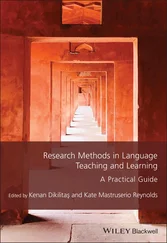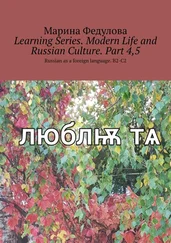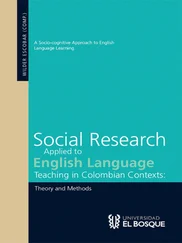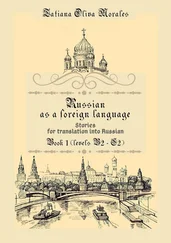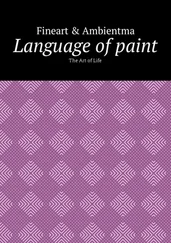1 ...6 7 8 10 11 12 ...39 Plato’s entire concept of the teacher’s artistry is perhaps best explained with the term techne which is not accurately translated with its closest approximation ‘art.’ Techne shares in common with art its focus on concrete artistic expression. However, it emphasizes the practical and wide-ranging knowledge and skills which art requires and not the individual creativity commonly associated with the arts. In this sense it is closer, for instance, to the kind of artistry associated with the art of healing than with that of painting or music. A further decisive characteristic is that its expression is considered to be ultimately helpful for the realization and development of the highest human potentials. This is, for example, what leads Socrates and Plato to the conclusion that Rhetoric cannot be considered techne . As will become evident in the context of later developments, Plato’s entire approach to teaching as techne can be considered as a decisive contribution to the concept of teaching as an art.
1.2.4 European Humanism and the Art of Teaching
One of the consequences of the rise of Humanism in the Renaissance was the re-emergence of an approach to teaching with clear roots in Sophistic thinking. The earlier Scholastic approach to studying theological writings based on the strict dialectical approach of lectio and disputatio which had been the accepted teaching practice in all subjects throughout the Middle Ages, was gradually transformed, in part, through a new emphasis on the discipline of Rhetoric in teaching.42 Later, in the course of the 17 thcentury, a new and independent field of Didactics emerged, in which the specific principles of teaching were developed and systematized.43 Comenius’ Didactica magna (1657) can be seen as the first large scale attempt to develop a rational system of teaching principles. In his emphasis on a new way of teaching based on Anschauungsprinzipien ( illustrative principles) as opposed to mechanical learning procedures, as well as in the significance which he attached to spontaneity in teaching (“sponte fluit”) Comenius offered elements of a new, humanistic vision of teaching which differed substantially from those shaped by previous medieval traditions.
The writings of Locke and later Rousseau were also influential in advocating a view of teaching in which encouraging and developing young pupils’ own interest and activity in learning was seen as vital.44 This contrasted strongly with the style of teaching still widely present in the first half of the 18 thcentury based on a strictly catechistical approach. Moreover, Pestalozzi’s educational principles and methods can also be clearly distinguished from the formalistic principles and authoritative style of teaching prevalent at that time.45 Johann Georg Hammans Fünf Hirten Briefe das Schuldrama betreffend (1763) offered a new vision of teaching based on incorporating elements of drama and acting.46 Fröbel’s later development of the idea of a kindergarten, based on his belief in the harmonious nature of the young child’s being, and the adult’s responsibility to appropriately assist the child in her natural development can also be seen as reflecting a broadly humanistic approach to education. Parallel to these developments, a new approach to studying the classics in universities developed in which the texts were no longer used as a basis for exercises in grammar and rhetoric, but were intensively studied with the intention of developing and educating the entire human being.47 All of these developments can also be seen as connected to the rise of German Idealism, and reflected in the writings of Winckelmann, Herder, Lessing, Goethe, Schiller, Humboldt, Fichte and Schleiermacher. In this context, Schiller’s Über die ästhetische Erziehung des Menschen can be viewed as particularly significant in regard to the later development of the concept of teaching as an art.48
1.2.5 Schiller: Aesthetic Education
Schillers small tract Über die ästhetische Erziehung des Menschen , written in the form of twenty-seven letters, conveys his ideal of the development of an individual and a society in freedom. In contrast to Kant who saw the overcoming of feelings and instincts through a sense of moral duty and ensuing actions as the highest virtue, Schiller sought possibilities in which an individual in full acceptance of his or her sentient being would desire to cultivate the highest moral ideals as an act of free choice . He describes two contrasting instincts as generally being decisive in human behaviour: an instinct in which one is led to unreflectively follow and act on sentient experience ( Stofftrieb ), and an instinct through which these feelings can be subjugated in order to act according to moral principles (Formtrieb ). Through the Stofftrieb, actions are dictated by sensory experience and natural instincts; through the Formtrieb one controls feelings and instincts through inner thought and logic. In this polarity, Schiller saw little possibility of realizing the potentials of human development, insofar as in both cases necessity rather than freedom is decisive in shaping behaviour. To these two instincts, he envisioned a third, the Spieltrieb, in which these two instincts are united, creating the possibility of human behaviour resulting from freedom and choice, instead of instinct, or moral imperatives:
The sense impulse wants to be determined, to receive its object; the form impulse wants to determine for itself, to produce its object; the play impulse will endeavour to receive as it would itself have produced, and to produce as the sense aspires to receive.49 (14 thletter)
[Der sinnliche Trieb will bestimmt werden , er will sein Objekt empfangen; der Formtrieb will selbst bestimmen, er will sein Objekt hervorbringen; der Spieltrieb wird also bestrebt sein so zu empfangen, wie er selbst hervorgebracht hätte, und so hervorzubringen, wie der Sinn zu empfangen trachtet . ] (italics in original)
The realization of the Spieltrieb is only possible in the realm of beauty ( Bereich des Schönen) . It is only in and through aesthetic experience that the Spieltrieb can be fully experienced and it is only in play ( Spiel) that human potentials are fully realized:
… the Beautiful is not to be mere life, nor mere shape, but living shape – that is, beauty – as it dictates to mankind the twofold law of absolute formality and absolute reality. Consequently it also pronounces the saying: Man shall only play with Beauty, and he shall play only with Beauty . Thus – and to finally speak it out – the human being only plays when he is in the full sense of the word human and he is only wholly human when he plays.50 (15 thletter) ( italics in original)
[…das Schöne soll nicht bloßes Leben und nicht bloße Gestalt, sondern lebende Gestalt, das ist, Schönheit sein; indem sie ja dem Menschen das doppelte Gesetz der absoluten Formalität und der absoluten Realität diktiert. Mithin tut sie auch den Ausspruch: der Mensch soll mit der Schönheit nur spielen , und er soll nur mit der Schönheit spielen. Denn, um es endlich auf einmal herauszusagen, der Mensch spielt nur, wo er in voller Bedeutung des Worts Mensch ist, und er ist nur da ganz Mensch , wo er spielt.] (italics in original)
Schiller’s view of aesthetic education can only be fully understood in the context of the central role which he considered aesthetics to have in all human development. In his work it becomes evident that the role of art and beauty (Schönheit) in the further development of the Spieltrieb are seen as being decisive in all areas of education and life, resulting ideally in a harmony and unity – a Lebenskunst with implications in all areas of social life:
Читать дальше

